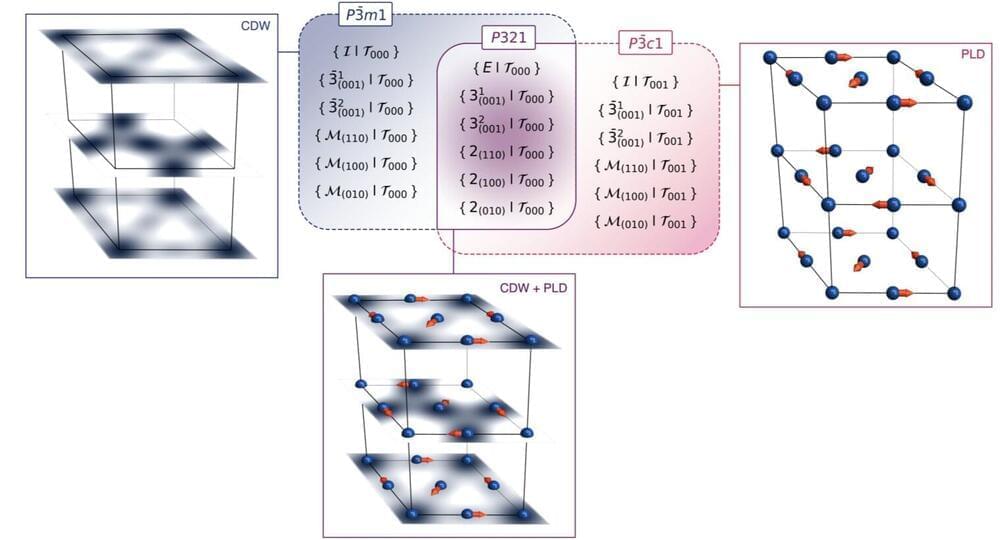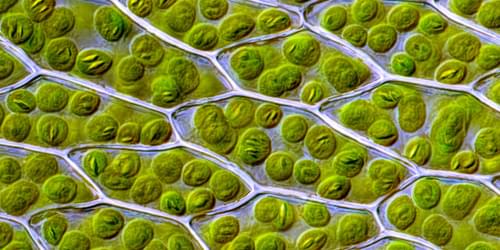In 2024, the Kavli Institute of Brain and Mind will reach its 20th anniversary. To celebrate this milestone, we hosted a special symposium on Monday, October 28, 2024 at Salk Institute-The Generative Mind: Biological and Artificial Intelligence. Please enjoy the presentation \.
Category: biological – Page 54

Human evolution in an AI world: Predicting changes in brain size, attention and social behaviors
As artificial intelligence (AI) becomes more common and sophisticated, its effects on human lives and societies raises new questions. A new paper published in The Quarterly Review of Biology posits how these new technologies might affect human evolution.
In “How Might Artificial Intelligence Influence Human Evolution?” author Rob Brooks considers the inevitable but incremental evolutionary consequences of AI’s everyday use and human-AI interactions—without “dramatic but perhaps unlikely events, including possibilities of human annihilation, assimilation, or enslavement.”
In the paper, Brooks considers (“often with considerable speculation”) some possible forms of human-AI interaction and the evolutionary implications of such interactions via natural selection, including forms of selection that resemble the inadvertent and deliberate selection that occurred when humans domesticated crops, livestock, and companion animals.

Humans are walking ecosystems and microbes rule their evolution
We might like to think of ourselves as autonomous entities but, in reality, we’re more like walking ecosystems, teeming with bacteria, viruses, and other microbes. It turns out that differences in these microbes might be as crucial to evolution and natural variation as genetic mutations are.
This novel perspective was discussed in a recent publication by Seth Bordenstein, director of Penn State’s One Health Microbiome Center, who is a professor of biology and entomology and holds the Dorothy Foehr Huck and J. Lloyd Huck Endowed Chair in Microbiome Sciences.
He, along with 21 colleagues from around the globe, collectively known as the Holobiont Biology Network, propose that understanding the relationships between microbes and their hosts will lead to a more profound understanding of biological variation.
From Homo Sapiens to Holo Syntellectus: A Journey into the Cybernetic Singularity
Step Into the Future with The Cybernetic Singularity: The Syntellect Emergence 🎧 The groundbreaking third volume of The Cybernetic Theory of Mind series by Alex M Vikoulov is now available as an audiobook!
Ecstadelic Media Group releases a new non-fiction audiobook The Cybernetic Singularity: The Syntellect Emergence, in addition to a previously published Kindle eBook, part of The Cybernetic Theory of Mind series. Written by Alex M. Vikoulov; Narrated by Virtual Voice; Foreword by Antonin Tuynman, PhD; Format: Audible audiobook (Press Release, Burlingame, CA, USA, November 16, 2024 09.23 AM PST)
The Cybernetic Singularity: The Syntellect Emergence is a visionary exploration of humanity’s impending transition into a post-biological state of existence, where artificial intelligence, advanced cybernetics, and collective intelligence converge to form a unified Global Mind. As the third installment in The Cybernetic Theory of Mind series, this book delves into the transformative potential of AI and the emergence of hyperconnected “infomorphs” — substrate-independent minds transcending biological limitations. It examines the profound philosophical, technological, and existential implications of this evolutionary leap, which may redefine what it means to be human. The book also introduces key concepts like Cybernetic Immortality and Experiential Realism, suggesting how we might engineer a future of infinite creativity and bliss.
With the Syntellect Hypothesis as its foundation, The Cybernetic Singularity presents a roadmap to the ultimate phase transition of civilization — the awakening of a universal consciousness network capable of synthesizing knowledge, experience, and purpose at unimaginable scales. From the rise of transhumanism to the development of a planetary superorganism, the narrative connects cutting-edge scientific insights with metaphysical musings on the nature of reality. Opening with Norbert Wiener’s quote, “The world of the future will be an even more demanding struggle against the limitations of our intelligence,” the book invites readers to contemplate their role in this grand cosmic drama. Whether you are a technophile, philosopher, or futurist, this volume is an essential guide to understanding and embracing the dawn of the Syntellect Emergence.



Study examines how early experiences shape our mental health trajectory
Satellite Data Reveals How Environment Shapes Kids’ Brain Health https://neurosciencenews.com/environment-brain-development-28026/
Adverse childhood experiences can lead to adult symptoms of anxiety and depression, mediated by life history strategies, according to a study published in Biodemography & Social Biology.
Existing research underscores the psychological impact of early-life adversity, with theories across cognitive, behavioral, and evolutionary psychology exploring these long-term effects. The life history theory, specifically, offers insight by framing adverse childhood experiences (ACEs) in terms of fast or slow life strategies, each with distinct reproductive and developmental adaptations suited to one’s environment.
Life history theory posits that individuals exposed to unstable or hostile environments in childhood often adopt a “fast” life strategy, focusing on early reproduction and risk-taking. In contrast, those in stable conditions tend to adopt “slow” strategies, emphasizing long-term planning and higher parental investment.


UP Aerospace and Los Alamos lab achieve successful suborbital launch at Spaceport America
In Nijmegen, Netherlands, researchers have installed the world’s first microscope capable of live imaging of biological processes in such detail that moving protein complexes are visible. This new microscopic technique was developed by researchers led by Nico Sommerdijk from Radboud university medical center. As a demonstration of this innovative technique, Sommerdijk is now showcasing how arterial calcification begins.

Information Flow in Molecular Machines
A theoretical model shows that exchange of information plays a key role in the molecular machines found in biological cells.
Molecular machines perform mechanical functions in cells such as locomotion and chemical assembly, but these “tiny engines” don’t operate under the same thermodynamic design principles as more traditional engines. A new theoretical model relates molecular-scale heat engines to information engines, which are systems that use information to generate work, like the famous “Maxwell’s demon” [1]. The results suggest that a flow of information lies at the heart of molecular machines and of larger heat engines such as thermoelectric devices.
The prototypical engine is a steam engine, in which work is produced by a fluid exposed to a cycle of hot and cold temperatures. But there are other engine designs, such as the bipartite engine, which has two separate parts held at different temperatures. This design is similar to that of some molecular machines, such as the kinesin motor, which carries “molecular cargo” across biological cells. “Bipartite heat engines are common in biology and engineering, but they really haven’t been studied through a thermodynamics lens,” says Matthew Leighton from Simon Fraser University (SFU) in Canada. He and his colleagues have now analyzed bipartite heat engines in a way that reveals a connection to information engines.